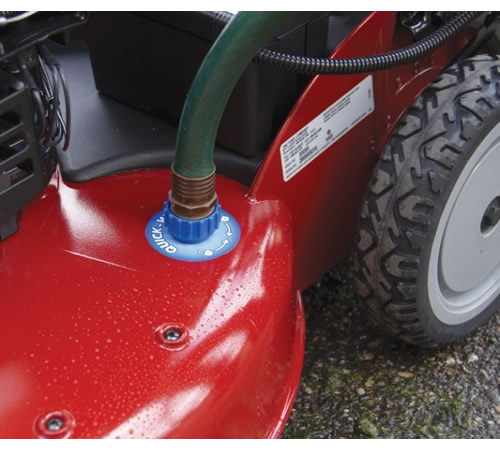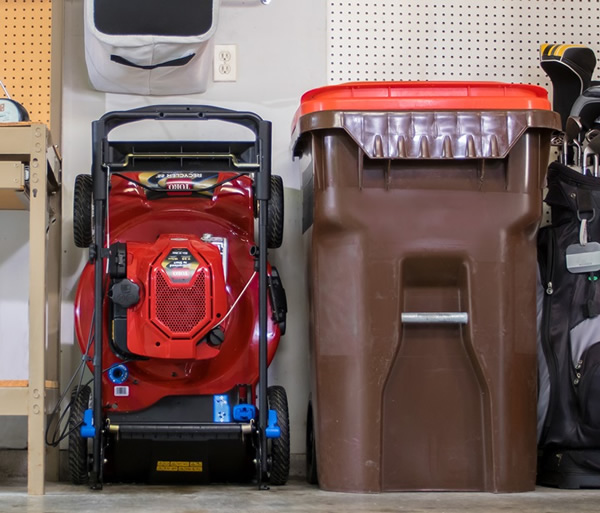
We have certain expectations as consumers and when choosing garden machinery regardless of a budget being £25 or £1000, we want value for money and the longer it is before garden machinery needs replacing the better our investment. Cars, washing machines, vacuums…they are all household purchases that need to be serviced and cleaned to ensure they are kept in the best working order and garden machinery requires the same practice.
Thank you for reading this post, don't forget to subscribe!Know your product
Our first recommendation would be before you make your initial purchase do your research on the product. We don’t just mean searching for voucher codes and the best price including delivery (to save you checking ― it’s mowers-online.co.uk!) We have many a request from customers who are searching for parts for their generic, garden centre chain purchase only to be told that the parts aren’t available. We always advise that you purchase tools and machinery from a Manufacturer that has after sales support and parts are readily available, such as Hayter, Mountfield, Stiga, AL-KO and Cobra).
Your machinery should come with a physical manual or there should at least be a link to an online resource for you to access. You should be able to read up on maintaining your product and make a note of any cleaning and servicing requirements it may need.
Always make sure the machinery has cooled down completely before starting any maintenance.
Cleaning
We advise cleaning your tools after use, especially if the working conditions have been wet or muddy. We do not recommend using a pressure washer to clean garden machinery as water can get into unwanted areas and direct pressure can cause damage. A blower is a good tool to use for blasting away dirt and a soft brush to remove stubborn debris from chassis, housings, and grass bags.
Ride on mowers and premium walk-behind mowers usually feature a hose connector which can attach a standard garden hose to the top of the deck. When connecting a hose make sure it is attached securely ― if water gets into batteries or electrical components it could be very costly. Make sure the brake is on, the grass collector is detached, and the mower deck is set to low. Then switch on the hose and start the mower’s engine. Let the engine run for a few minutes and as the water flows through and the blades turn the underdeck should be thoroughly cleaned. When finished remove the hose and run the engine for a few minutes to dry off the blades or let it dry off naturally.
If your lawnmower doesn’t have a connector, you can still use a standard hose though it may be best to have another person help you. Do not tip the mower on its side, tip the mower back using the handlebars with just enough room to access the blades. Carefully remove any obvious clumps or sticks that may be stuck underneath. Spray the hose on low pressure and use a stiff brush to clean away grass and dirt. After cleaning leave to dry naturally.
Scrapping is another way to clean the underdeck. The flat edge of a plastic paint scraper will do the job, thoroughly clean away any grass and debris from the blades and underdeck, brushing any dust away to finish.
For chainsaws and hedgecutters we recommend using Stihl’s Hedgetrimmer and Chainsaw Resin Solvent which removes the sticky residue that can build up on the blades.

Annual servicing
Most Manufacturers who offer warranties over 12 months require you to have your machine serviced annually by an authorised dealer to uphold the warranty. The warranty will not include consumable items such as tyres, belts and blades.
If your machine is out of warranty, you may feel confident to service it yourself. If the parts are readily available, you can consult your user manual on how to service your machine or there are plenty of ‘how to’ youtube videos. See our blog on why we recommend purchasing genuine parts.
All machinery requires oil to keep the parts lubricated, check your user manual for more details. Chainsaws should always have a continuous flow of oil to keep the chains lubricated. Hedgetrimmers should have the blades cleaned and sharpened every season.
We have a range of lubricants available for keeping your machines working efficiently here.
Storage
How you store your machinery will have an impact on its longevity. Keeping the elements away from chassis, casings, engines and components will reduce degeneration over time. If you do not have the room to store larger machinery in a garage or shed, a machinery cover is a good investment.
We recommend using fuel additives to keep your petrol fresh for up to three years or store with an empty tank. If not using an additive, we do not advise leaving fuel in the tank for longer than three weeks and when storing for the winter run the engine until its dry or syphon the fuel out.
Cordless machine batteries should be stored indoors away from damp and cold conditions.
Ride on mowers can have their batteries left to trickle charge over the winter, the batteries are low voltage and will not cause any issues being left to charge.

Know the machine’s limitations
Read your machines specification and ensure you are using it correctly. An example would be when using a hedgetrimmer or polesaw be aware of the branch diameter you are cutting. You can search your product online and the technical details should specify what cm/mm diameter branch your saw can cut or with a hedgecutter, whatever mm the tooth spacing states is the maximum vegetation thickness it can tackle.
If you are in need of some further help and expert
advice:
Please call us on: 01452 61 61 69
Or email us at: [email protected] | [email protected]
Other resources
WHY WE RECOMMEND FUEL ADDITIVES
TIPS FOR STORING YOUR LAWNMOWER FOR THE WINTER
CHAINSAW MAINTENANCE – COMMON PROBLEMS AND GOOD PRACTICE
HOW TO CLEAN AND LUBRICATE HEDGETRIMMER BLADES
